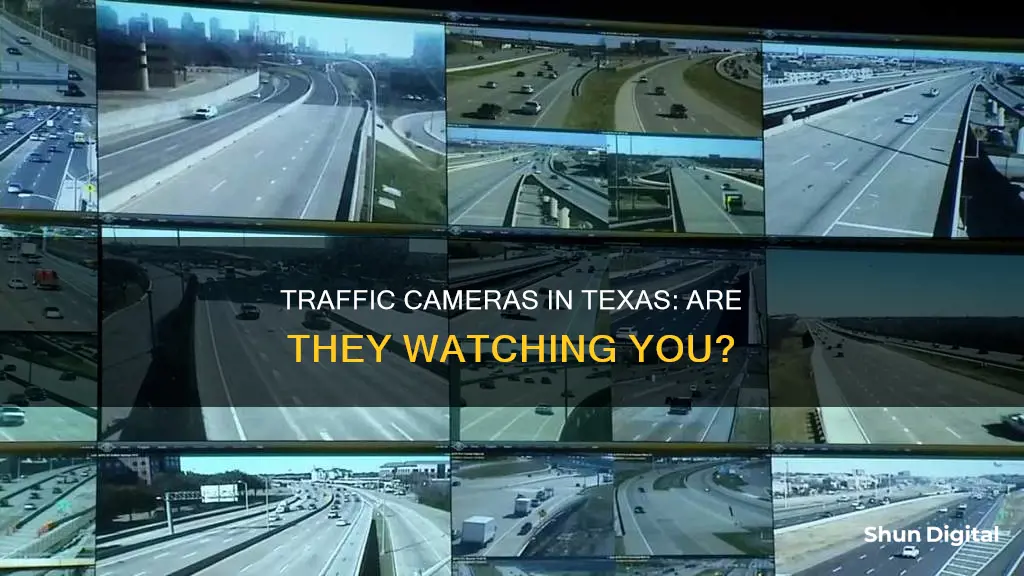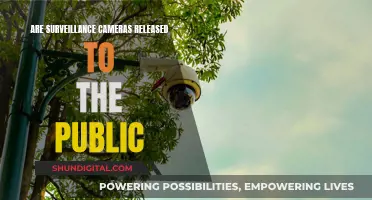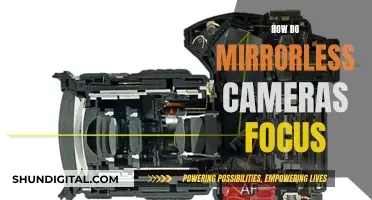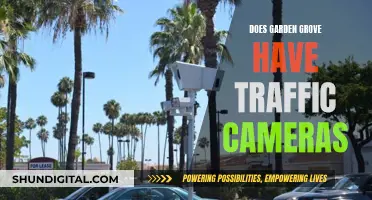
Texas banned the use of red light cameras in 2019, but some cities such as Humble, Amarillo, Leon Valley, and Balcones Heights still have operational traffic cameras. These cameras are typically mounted on utility poles overlooking intersections to record speeders and drivers who fail to stop at red lights. While local police officers can still issue tickets for these offenses observed in person, they cannot issue tickets based on traffic camera footage.
| Characteristics | Values |
|---|---|
| Red light cameras | Outlawed in Texas since 2019 |
| Traffic cameras | Currently, Texas has no traffic enforcement cameras |
| Fines | Tickets received for traffic camera violations do not need to be paid |
What You'll Learn

Texas banned red-light cameras in 2019
Red-light cameras have been a divisive topic in Texas for years. In 2019, the Texas Legislature banned cities and municipalities from using traffic and red-light cameras. This law, which went into effect in September 2019, prohibits local governments from issuing citations or complaints and seeking civil or criminal penalties based on images from a traffic camera system.
There were several reasons for this decision. One argument against red-light cameras is that they violate people's constitutional rights. Since the cameras capture a clear image of the license plate but not the driver, they violate the idea that Americans are innocent until proven guilty. Additionally, it is unclear whether law enforcement officers who review the camera footage count as a witness against the accused driver.
Another argument is that red-light cameras are expensive. They cost $100,000 to install, and many drivers do not pay their tickets because they do not affect their driving record and they cannot be arrested if they do not comply.
Critics of the cameras also argue that they are a symbol of government overreach and that they decrease safety at intersections. To avoid getting cited for running a red light, drivers may slam on their brakes, resulting in more rear-end collisions. A Case Western Reserve University study found that while red-light cameras successfully reduced T-bone angle accidents, they led to a 28% increase in non-angle accidents due to sudden braking.
However, some cities in Texas, such as Humble, Amarillo, and Leon Valley, continued to have operational traffic cameras even after the 2019 ban. This was due to a provision in the law that allowed cities with existing contracts with third-party vendors to finish their contracts before discontinuing the use of red-light cameras.
Unlocking Macro Photography: Mastering Camera's Macro Focus
You may want to see also

Some Texas cities still have traffic cameras
Texas banned the use of red light cameras in 2019. However, some cities in the state still have traffic cameras. This is due to a provision in the law that allows municipalities with existing contracts with third-party operators to continue running their cameras until the contracts expire.
Humble, for example, has 10 cameras at six intersections. Other Texas cities with operational traffic cameras include Amarillo, Leon Valley, and Balcones Heights. These cities cannot enforce fines or tickets received through the mail. However, they may face penalties for turning off the cameras before their contracts end.
Traffic enforcement cameras are typically mounted beside or over a road or installed in an enforcement vehicle. They detect violations such as speeding, running red lights, unauthorized use of bus lanes, or vehicles in congestion charge areas. While these cameras can be a source of revenue for cities, they have also been criticised for potentially violating constitutional rights and increasing the risk of certain types of accidents.
The presence of traffic cameras in Texas has been a subject of debate. Some proponents argue that they promote traffic safety and reduce crashes. On the other hand, critics claim that the cameras violate the idea of innocent until proven guilty and can lead to an increase in rear-end collisions due to sudden braking. Despite the ban, some Texas cities have continued to operate traffic cameras, taking advantage of the provision that allows them to fulfil existing contracts.
Moto Z2's Dual Camera Mode: How Does It Work?
You may want to see also

Tickets from traffic cameras don't need to be paid
In 2019, Texas banned cities and municipalities from using traffic and red light cameras. The Texas red light camera law, outlined in Texas Transportation Code Sections 707.020 and 707.021, prohibits local governments from issuing citations based on images from traffic camera systems. The law also bans cities from operating traffic camera systems within their boundaries.
This means that if you receive a ticket from a traffic camera, you are not legally required to pay it. Cities are not allowed to enforce any fines or tickets that you may receive through the mail. However, it is important to note that this only applies to tickets issued by traffic cameras and not those issued by a police officer in person.
There is an exception to the ban on traffic cameras. Cities that had contracted with a third party to install and monitor their traffic cameras were allowed to continue using them until the expiration of the contract. This means that some drivers may still receive tickets from red light cameras in certain cities. However, even in these cases, the city cannot legally enforce the payment of any fines or tickets.
While you may not have to pay a ticket from a traffic camera, it is still important to drive safely and obey traffic laws. Intersections can be dangerous, and drivers who cause crashes can be held liable for paying compensation to those they injure. If you are involved in a car accident, it is recommended to consult an attorney to protect your rights and ensure you receive any compensation you may be entitled to.
In summary, while the presence of traffic cameras in Texas has been a topic of discussion and legislation, resulting in a ban on their use in issuing citations, it is important to remain vigilant and adhere to traffic rules to ensure safety on the roads.
Pi Cameras: Where Are They Manufactured?
You may want to see also

Red-light cameras may reduce T-bone accidents
Texas banned the use of red light cameras in 2019, prohibiting local governments from issuing citations or complaints based on images from traffic camera systems. While some cities continued to operate them, the ban was enforced to improve road safety and reduce accidents.
Red-light cameras are often implemented to reduce T-bone accidents, which are among the most dangerous types of collisions. T-bone accidents, or angle accidents, occur when a driver runs a red light and collides with another vehicle crossing the intersection. These accidents usually happen at considerable speeds and can cause serious injuries.
Proponents of red-light cameras argue that they promote traffic safety and reduce the number of vehicles running red lights. A 2019 presentation to the City of Amarillo showed that among all monitored intersections, the average number of annual crashes dropped from 11 per year in 2008 to 7 per year in 2017, suggesting that drivers may behave safer when monitored by cameras. Additionally, red-light camera programs can help ensure that traffic violations are recorded and sanctioned.
However, studies examining the effectiveness of red-light cameras in reducing accidents have produced conflicting results. While some sources claim that red-light cameras can reduce T-bone accidents, research in Houston, Texas, found no significant evidence to support this claim. The study, conducted by Justin Gallagher and Paul J. Fisher, analyzed traffic accidents in Houston before and after the implementation of a red-light camera program. They found that while angle accidents decreased with the cameras in place, the removal of the cameras led to only a slight increase in these accidents (26% more), while all other types of accidents decreased by 18%.
Furthermore, the study concluded that red-light cameras could lead to more accidents overall due to an increase in non-angle accidents, such as rear-end collisions. Drivers, fearing fines, may suddenly stop at yellow lights, causing more frequent fender-benders and non-angle collisions. This shift in traffic patterns can offset the potential benefits of reducing T-bone accidents, resulting in no significant improvement in overall traffic safety.
In conclusion, while red-light cameras may have the potential to reduce T-bone accidents, the available research suggests that their impact on overall traffic safety is inconclusive. The conflicting findings highlight the complexity of the issue, and further studies are needed to fully understand the effects of red-light cameras on different types of accidents and driving behaviors.
Trail Camera Power: Battery Options for Stealth Cameras
You may want to see also

Cameras may violate constitutional rights
Texas prohibited the use of traffic signal enforcement devices like red light cameras in 2019. While this law bans red light cameras, some municipalities may continue to operate them until their contracts with third-party installers expire.
The use of these cameras has been controversial, with some arguing that they violate constitutional rights. One argument is that they may violate the Sixth Amendment's Confrontation Clause, which grants criminal defendants the right to face their accusers. In the case of a traffic camera, the ticket is issued to the owner of the vehicle, not necessarily the person driving it, which can create uncertainty about the identity of the offender. As a result, these tickets are typically treated as civil fines rather than criminal offenses, making enforcement and collection challenging.
Another concern is the financial incentive for local governments and camera companies to use these cameras as a revenue stream. This profit motive can create a conflict of interest and lead to gaming the system, undermining citizens' faith in the government. There are also mixed results regarding the effectiveness of these cameras in improving public safety. While some studies show a reduction in accidents, independent studies and those financed by opponents show no gains or even worse outcomes.
The unpopularity of these cameras is evident in elections and polling data. Voters have consistently opposed them, and while a recent poll showed support for red-light cameras, it was suggested that this could be due to a lack of familiarity, as most respondents did not live in areas with such cameras.
In summary, the use of traffic cameras in Texas has been a contentious issue, with concerns raised about potential violations of constitutional rights, the financial motives of local governments and camera companies, and mixed evidence on their impact on road safety.
Unturned Camera Mode: How to Activate and Use It
You may want to see also
Frequently asked questions
Texas banned the use of traffic cameras in 2019. However, some cities like Humble, Amarillo, Leon Valley, and Balcones Heights have been allowed to continue operating them until their contracts with third-party vendors expire.
No, you do not have to pay a ticket issued by a traffic camera in Texas. According to the Texas Transportation Code, "A local authority may not issue a civil or criminal charge or citation for an offense or violation based on a recorded image produced by a photographic traffic signal enforcement system."
There were several reasons for the ban. One reason was that the cameras were found to increase the chances of rear-end collisions due to sudden braking. Another reason was that the cameras were expensive to install and many drivers did not pay their tickets. Additionally, it was argued that the cameras violated people's constitutional rights as they captured a clear image of the license plate but not the driver, and it was unclear if the reviewing officers counted as a witness.







